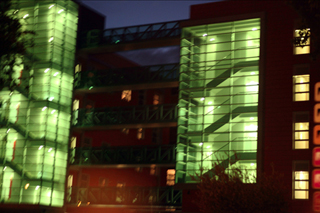
The merit of photographs: where does it lie?
Do these un-artistic photographs have merit, to anyone besides the one who took them and his or her inner circle; or, in the case of journalistic photographs, to anyone other than the media that ordered it or the client that bought a publicity photograph? In other words, does the ephemeral photo have any value that transcends the moment in which it is made? At fist sight, it doesn’t seem so. What relevance do the photographs of my grandchildren’s birthday party have, or Christmas eve 2004, the publicity of a car manufacturer of 1998 or a Czech team’s goal in a second division football match? But on the other hand it´s surprising that there is so much interest nowadays to organize photographic archives based precisely on that type of photos and the initiatives of several academic centers, museums, public and private institutions to collect photos without artistic status or pedigree in the market and to organize them systematically, with the costs and work that this implies. As well as the unsystematic collections of personal photos that many people keep in their houses. To explain this phenomenon one has to consider that history is a process, that each and every thing has a story and that all stories are composed of infinite smaller stories, of moments that are captured and frozen in each photograph. When we want to reconstruct history, or at least get close to the personal, social, family history, of our surroundings, of an institution, a group, we turn to the stored photos that allow us to catch, more than anything else, the bricks with which history has been built.
To explain this phenomenon one has to consider that history is a process, that each and every thing has a story and that all stories are composed of infinite smaller stories, of moments that are captured and frozen in each photograph. When we want to reconstruct history, or at least get close to the personal, social, family history, of our surroundings, of an institution, a group, we turn to the stored photos that allow us to catch, more than anything else, the bricks with which history has been built.
Photos are also valued so much because nostalgia for daily life is replacing criticism as well as utopias and plans for the future. The reconstruction of the past we see in television series and films, fashion, furniture, jewellery, etc is symptomatic of that nostalgia and it is the nostalgia of a past that is photographed, and doesn’t go beyond the 20th century. Perhaps is seems real to us precisely because it is photographed, not so other, more far away pasts, of which we have no reliable images. Perhaps the work that best represents this tendency is Woody Allen’s Midnight in Paris (1911), in which the main character travels each night to the past he longed for, and undoubtedly knew the images of. This nostalgia can’t be found in current ways of thinking or in other artistic forms.
The images that allow us to reconstruct the past just like the author´s photos are also saved by institutions outside of the world of photography: historians, archives, universities, to finally end up online. Paradoxically the most modern of instruments ends up, as P. Franks says, consolidating old systems and not creating new perspectives.
Guillermo Labarca
